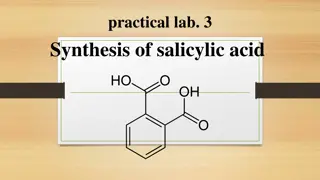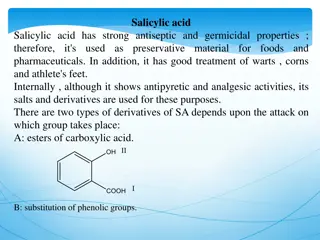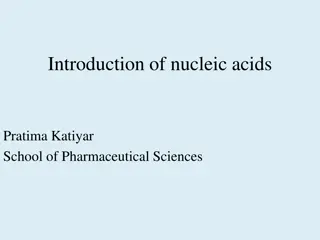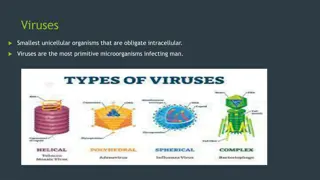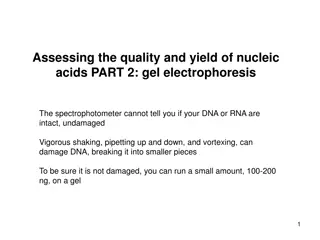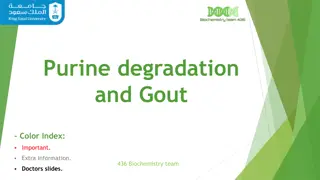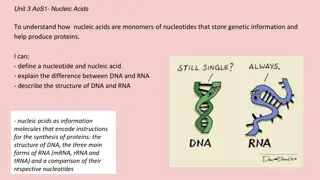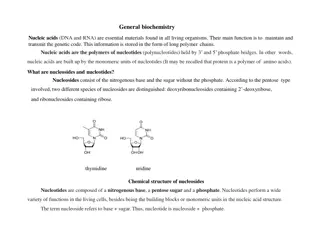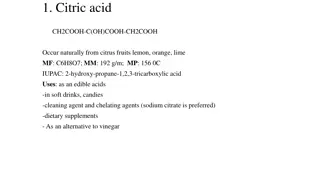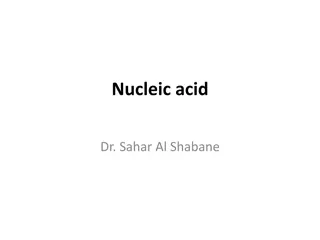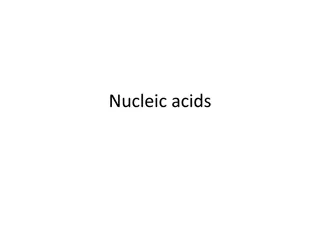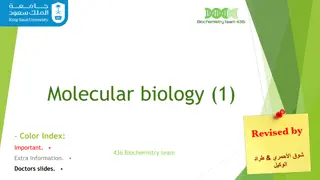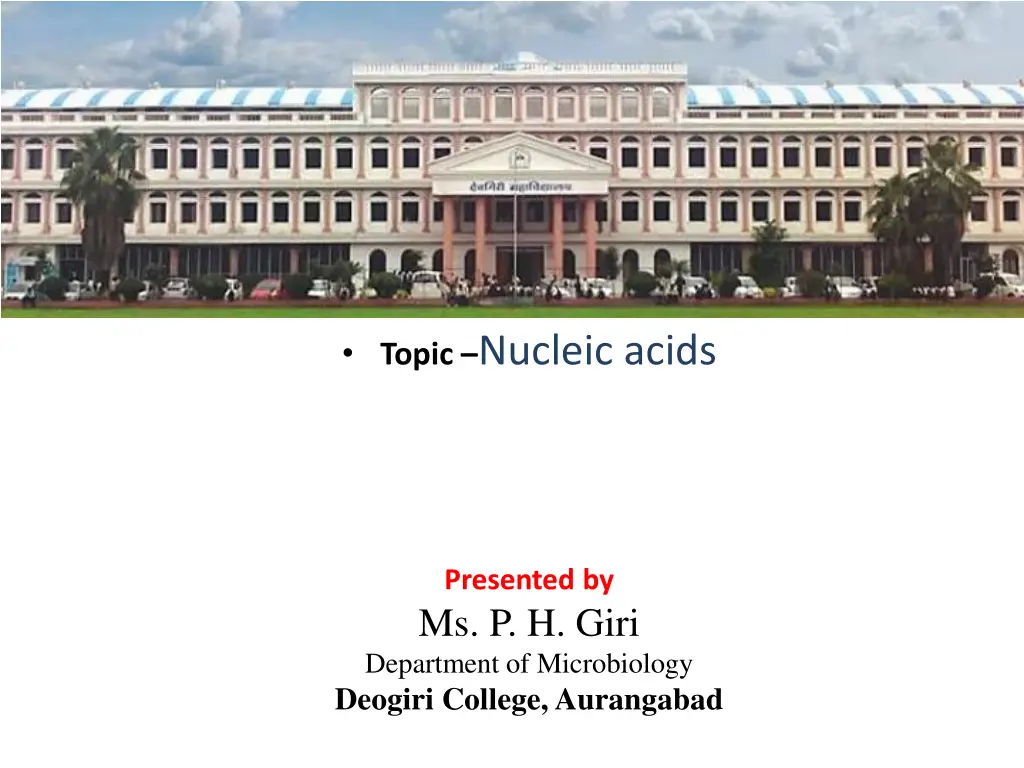
Understanding the Structure of DNA and Nucleic Acids
Explore the structure of DNA and nucleic acids, including the double helix model proposed by Watson and Crick, the composition of nucleotides, and the arrangement of molecules in a DNA strand. Learn about the key components of DNA, such as deoxyribose sugar, phosphate groups, and nitrogenous bases, that make up the fundamental building blocks of genetic material.
Download Presentation

Please find below an Image/Link to download the presentation.
The content on the website is provided AS IS for your information and personal use only. It may not be sold, licensed, or shared on other websites without obtaining consent from the author. If you encounter any issues during the download, it is possible that the publisher has removed the file from their server.
You are allowed to download the files provided on this website for personal or commercial use, subject to the condition that they are used lawfully. All files are the property of their respective owners.
The content on the website is provided AS IS for your information and personal use only. It may not be sold, licensed, or shared on other websites without obtaining consent from the author.
E N D
Presentation Transcript
Topic Nucleic acids Presented by Ms. P. H. Giri Department of Microbiology Deogiri College, Aurangabad
B.Sc. F. Y. Semester II Paper No. V Basic Biochemistry Unit 4 Nucleic acids Ms. Priyanka H. Giri
STRUCTURE OF DNA The widely accepted molecular model of DNA is the double helix structure proposed by Watson and Crick (1953). The DNA molecule consists of two helically twisted strands connected, together by 'steps' as shown in figure
1) Each strand consists of alternating molecules of deoxyribose (a pentose sugar) and phosphate groups. 2) Each step is made up of a double ring purine base and a single ring - pyrimidine base. 3) The purine and pyrimidine bases are connected to deoxyribose sugar molecules. 4) The two strands are intertwined in a clockwise direction, i.e. in a right hand helix, and run in opposite directions.
5) The strand completes a turn each 34A. Each nucleotide occupies 3.4A. Thus, there are 10 nucleotides per turn. 6) Each successive nucleotide turns 36 degrees in the horizontal plane. 7) The width of the DNA molecule is 20A. 8) The twisting of the strands results in the formation of deep and shallow spiral grooves.
The DNA molecule is a polymer consisting of several thousand pairs of nucleotide monomers. Each nucleotide consists of the pentose sugar deoxyribose, & phosphate group and a nitrogenous base which may be either a purine or a pyrimidine. Deoxyribose and a nitrogenous base together form a nucleoside. A nucleoside and a phosphate together form a nucleotide.
DNA Structure DNA consists of two molecules that are arranged into a ladder-like structure called a Double Helix. A molecule of DNA is made up of millions of tiny subunits called Nucleotides. Each nucleotide consists of: 1. Phosphate group 2. Pentose sugar 3. Nitrogenous base
Nitrogenous bases There are 2 types: Purines: Two ring structure Adenine (A) and Guanine (G) Pyrimidines: Single ring structure Cytosine (C) and Thymine (T) or Uracil (U).
Nucleotide: (Ribose sugar + N.B. + Phosphate Group)
Base pairing Each 'step' of the DNA ladder is made up of a purine and a pyrimidine pair, i.e. of a double ring and a single ring compound.
Fig. Segment of DNA molecule showing pairing between two nucleotides.







